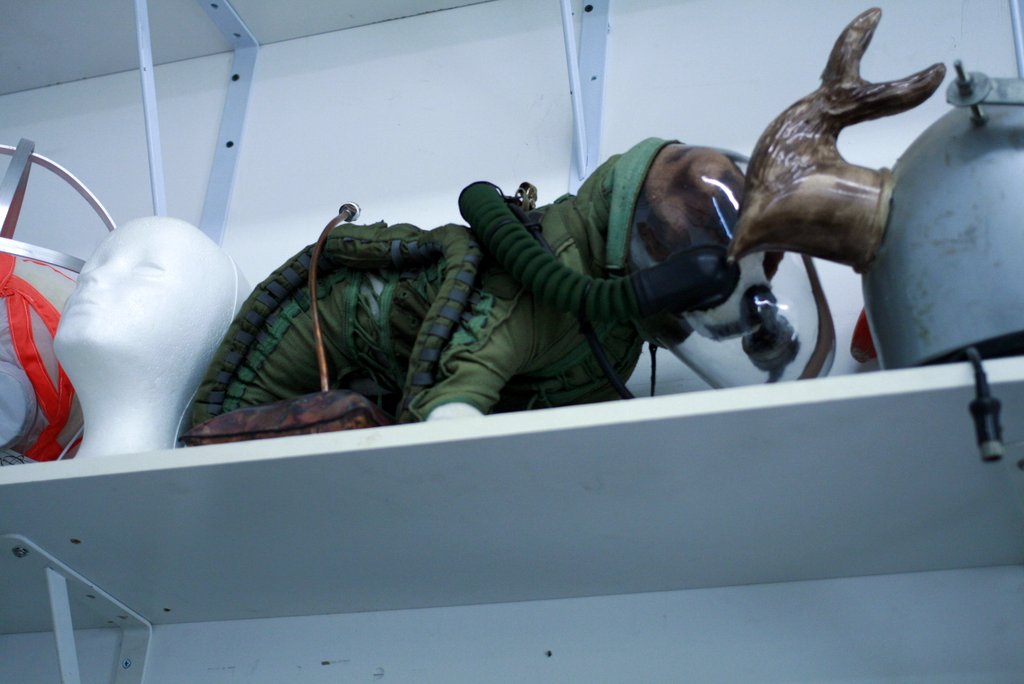A company makes spacesuits in the Brooklyn Navy Yard. It’s called Final Frontier Design.
The company recently announced a partnership with Starfighters Aerospace to optimize spacesuits for work inside the firm’s supersonic jets. The move anticipates an application by Starfighters to license their jets as commercial space travel vehicles.
Starfighters currently owns and operates eight Lockheed F-104s out of the Kennedy Space Center’s Shuttle Landing Facility, in Florida.
[slideshow_deploy id=’17439′]
Final Frontier Design was cofounded by Nikolay Moiseev and Ted Southern, who initially met as competitors in NASA’s 2007 glove competition. Moiseev is a veteran of the Russian space program, and Southern is a sculptor and artist. They decided to join forces and won a subsequent competition together in 2009.
Most of the company’s revenue up to this point has come from making spacesuit components for NASA, especially gloves. Southern gave us the story when we stopped by his Brooklyn Navy Yard workshop last Friday. He started out as a sculptor and costume designer, but when he went to get his MFA at Pratt, he focused his work on hands and gloves. When NASA announced its 2007 contest, he decided to enter it as his MFA project. He did well enough that it morphed into a career.
Relying on government contracts, particularly as a very small company, has not been sustainable, Southern said. “It’s not continuous, it’s not reliable, it’s not predictable,” he said. Add to that a plethora of complicated rules relating to the security of designs used for space travel.
The company sees a future in three primary revenue streams:
- Short-term, Final Frontier is trying to figure out how to give people who can’t afford a trip into space something like a space experience in their Brooklyn facility. They could give people the full experience of getting into a suit, pressurizing, trying certain tasks in the suit that astronauts routinely have to practice, as well as getting in the flight simulator. “I see that as a really nice in for this new industry of space for people who can’t pay $250K to go to space,” Southern said. The company has begun scripting a potential experience.
- Long-term, the team projects a bright future for intra-vehicular space activity (IVA) spacesuits. These are the suits that travelers wear as they leave Earth’s atmosphere but don’t leave the vehicle. NASA is primarily interested in extra-vehicular activity suits (EVA), but if private space flight takes off, each company will need several dozen IVA suits.
- An additional long-term market is training companies, such as Waypoint 2 Space. These companies get travelers ready to experience weightlessness, do work in space or simply give people the experience of training.
Once the Final Frontier suits have gone through the flight certification process, Southern expects they will sell for about $80,000 each. Suits for training companies may not need to be flight certified, so they could be less expensive. Certification is done by NASA. It is lengthy and expensive, but potentially worth it, if a company’s suit is seen as the best solution by players in space travel.
Before you go...
Please consider supporting Technical.ly to keep our independent journalism strong. Unlike most business-focused media outlets, we don’t have a paywall. Instead, we count on your personal and organizational support.
Join our growing Slack community
Join 5,000 tech professionals and entrepreneurs in our community Slack today!
